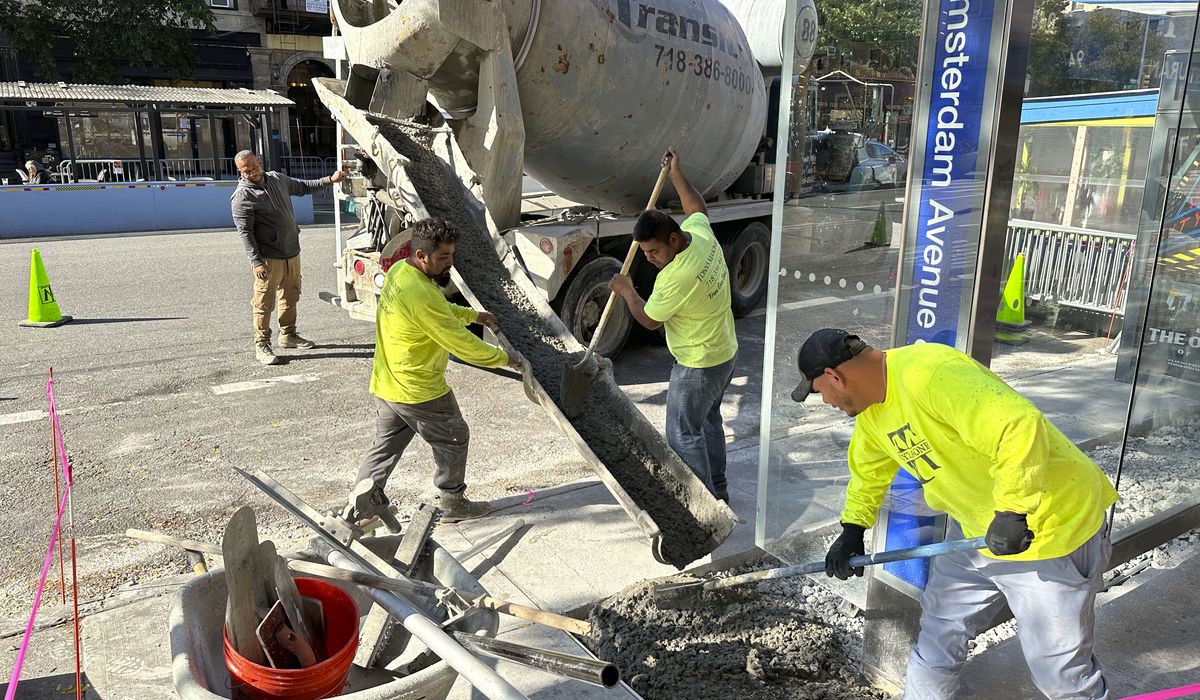WASHINGTON (AP) — The nation’s employers scaled back their hiring in October, adding a modest but still decent 150,000 jobs, a sign that the labor market remains resilient despite economic uncertainties and high-interest rates that have made borrowing much costlier for companies and consumers.
Last month’s job growth, though down sharply from a robust 297,000 gain in September, was solid enough to suggest that many companies still want to hire and that the economy remains sturdy.
The United Auto Workers’ strikes against Detroit’s automakers likely shrank October’s job gain by at least 30,000, economists say. The strikes ended this week with tentative settlements in which the companies granted significantly better pay and benefits to the union’s workers.
The unemployment rate rose from 3.8% to 3.9% in October.
Wage pressures, which have been gradually slowing, continued to ease in October. Average hourly pay rose 0.2% from September and 4.1% from 12 months earlier. The year-over-year wage increase was the lowest since June 2021; the month-over-month rise was the smallest since February 2022.
Friday’s jobs report from the government comes as the Federal Reserve is assessing incoming economic data to determine whether to leave its key interest rate unchanged, as it did this week, or to raise it again in its drive to curb inflation. Last month’s slowdown in pay increases, along with the lower job gain, could help persuade the Fed that inflation pressures will continue to ease and that further interest rate hikes may not be needed.
The Fed has raised its benchmark interest rate 11 times since March 2022 to try to slow the economy, cool hiring and tame inflation, which hit a four-decade high last year but has slowed sharply since then. In September, consumer prices rose 3.7% from a year earlier, down drastically from a year-over-year peak of 9.1% in June 2022 but still well above the Fed’s 2% target level.
The U.S. job market has remained on firm footing despite those rate hikes and has helped fuel consumer spending, the primary driver of the economy. Employers have now added a healthy 225,000 jobs a month over the past three months.
The number of people in the labor force – those who either have a job or are looking for one — fell by 201,000 in October, first drop since April. That may be disappointing news for the Fed. Over the past year, more than 3 million people have entered the workforce, making it easier for companies to find workers. This has reduced pressure on employers to wage raises and pass on their higher labor costs to their customers through higher prices. But the trend was broken last month.
The Fed’s policymakers are trying to calibrate their key interest rate to simultaneously cool inflation, support job growth and ward off a recession. Despite long-standing predictions by economists that the Fed’s ever-higher interest rates would trigger a recession, the U.S. economy, the world’s largest, remains durable. From July through September, the nation’s gross domestic product — the output of all goods and services — rose at a 4.9% annual pace, the fastest quarterly growth in more than two years.
And companies are still looking to hire. On Wednesday, the Labor Department reported that employers posted 9.6 million job openings in September, up slightly from August. Opening are down substantially from the record 12 million recorded in March 2022 but are still high by historical standards: Before 2021 and the economy’s powerful recovery from the COVID-19 recession, monthly job openings had never topped 8 million. There are now 1.4 jobs available, on average, for every unemployed American.
The combination of a solid economy and decelerating inflation has raised hopes that the Fed can nail a so-called soft landing — raising interest rates just enough to tame inflation without tipping the economy into recession.
Adding to the optimism is an influx of people into the job market, drawn by higher wages and reduced health risks from COVID-19 and the childcare struggles caused by pandemic-related school closings. Immigration has also rebounded after falling at the height of the pandemic.
Over the past year, more than 3.3 million people have either taken jobs or begun looking for one. Having more job applicants to choose from reduces pressure on companies to raise wages.
The Fed’s decision this week to leave its benchmark rate unchanged for a second straight time will give its policymakers time to assess the cumulative effects of their previous rate hikes. Many economists say they believe the Fed is done raising rates for now.
Still, at a news conference Wednesday, Fed Chair Jerome Powell cautioned that any evidence that the economy is running too hot “or that tightness in the labor market is no longer easing” could hinder further progress on inflation and justify additional rate hikes.
𝗖𝗿𝗲𝗱𝗶𝘁𝘀, 𝗖𝗼𝗽𝘆𝗿𝗶𝗴𝗵𝘁 & 𝗖𝗼𝘂𝗿𝘁𝗲𝘀𝘆: www.washingtontimes.com
𝗙𝗼𝗿 𝗮𝗻𝘆 𝗰𝗼𝗺𝗽𝗹𝗮𝗶𝗻𝘁𝘀 𝗿𝗲𝗴𝗮𝗿𝗱𝗶𝗻𝗴 𝗗𝗠𝗖𝗔,
𝗣𝗹𝗲𝗮𝘀𝗲 𝘀𝗲𝗻𝗱 𝘂𝘀 𝗮𝗻 𝗲𝗺𝗮𝗶𝗹 𝗮𝘁 dmca@enspirers.com



